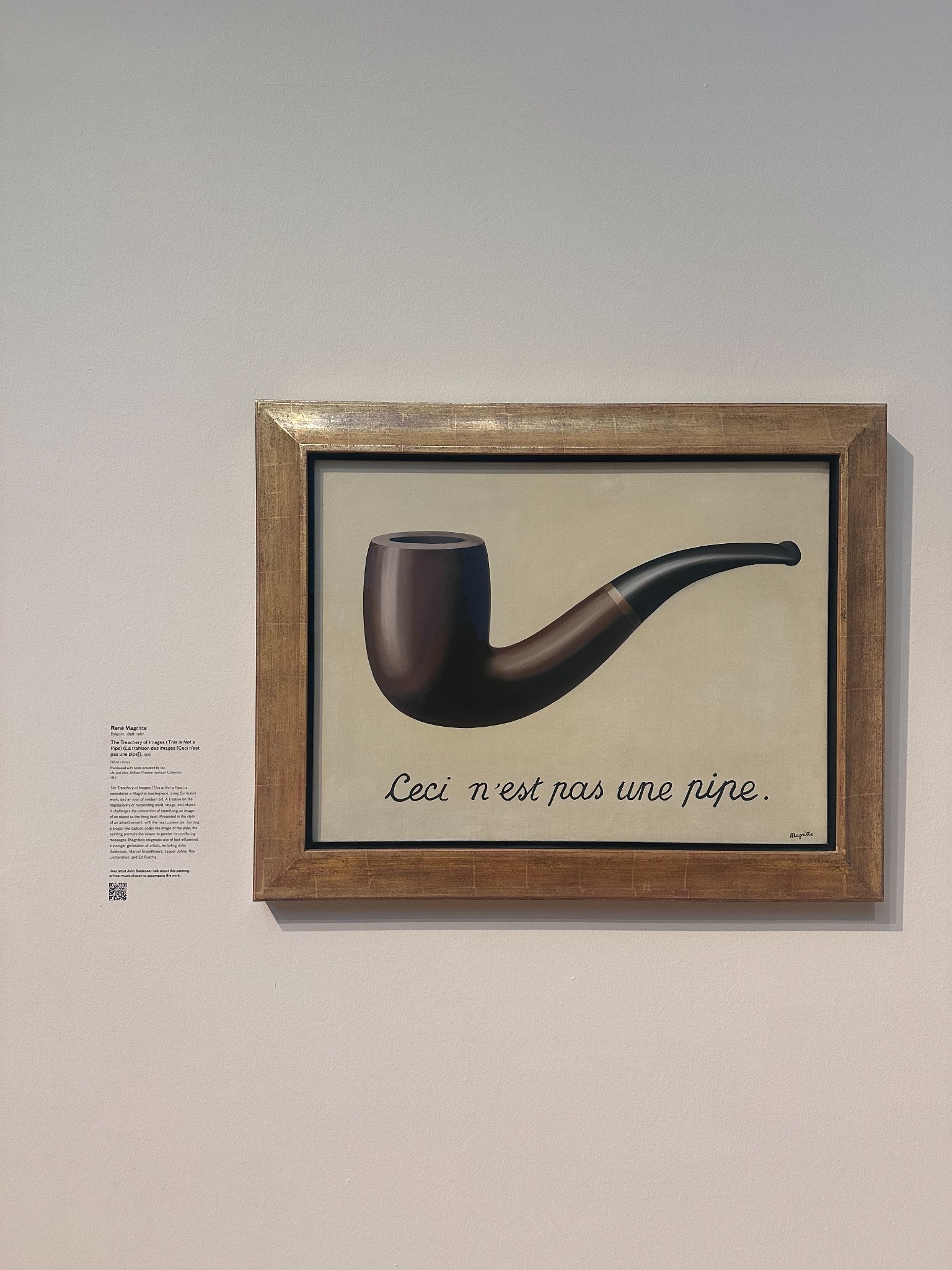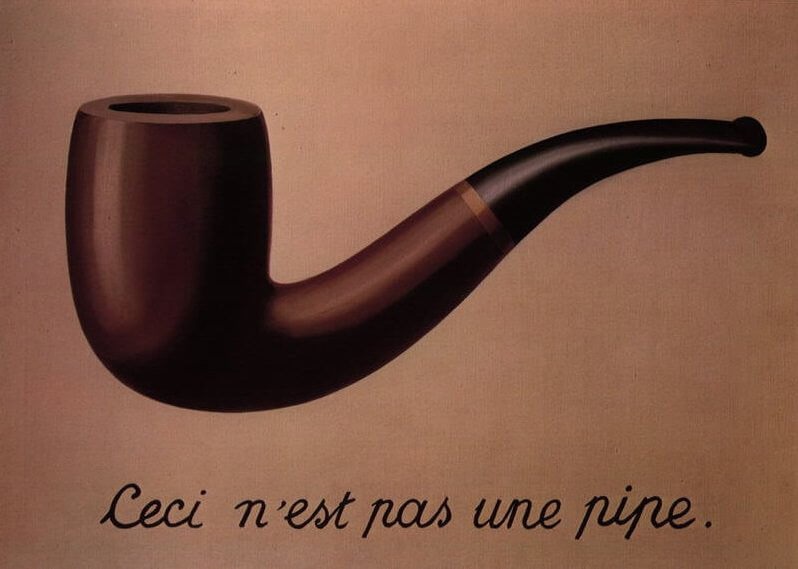The Treachery of René Magritte


The piece provokes inner thought via simplicity. Magritte forces the viewer to think beyond the realm. As mentioned before, Magritte’s advertisement inspires a sense of trust. However, after having considered the binaries and the dichotomy created, one has to reconsider simplicity. The text appears unelaborated but its syntactic negation challenges our trust in perception. Emotionally, the viewer is left unsettled after having been tricked by the object’s plain nature and they can only ask; ‘if it isn’t a pipe, then what is it?’
Ultimately, our only conclusion is that ‘it is a painting of a pipe’; but does this satisfy the insatiable mind of the viewer? It doesn’t matter because Magritte’s painting is a paradox, stubbornly obfuscating meaning. For an absurd painting it reflects a treachery that renders an illusionary reality perform effortlessly. Magritte’s pipe might feel like an artistic trick but explores logic. Magritte abandons sensibility, relaying subconscious vision to the viewer and inducing conceptions into reality. Surrealism aims to balance the rational vision of life with one that asserts the power of the unconscious realm. Magritte allows the viewer to contemplate our notions of perception while ultimately illustrating that our understanding of realist and idealist art are not separate entities but rather two sides of the same coin.
Post a comment